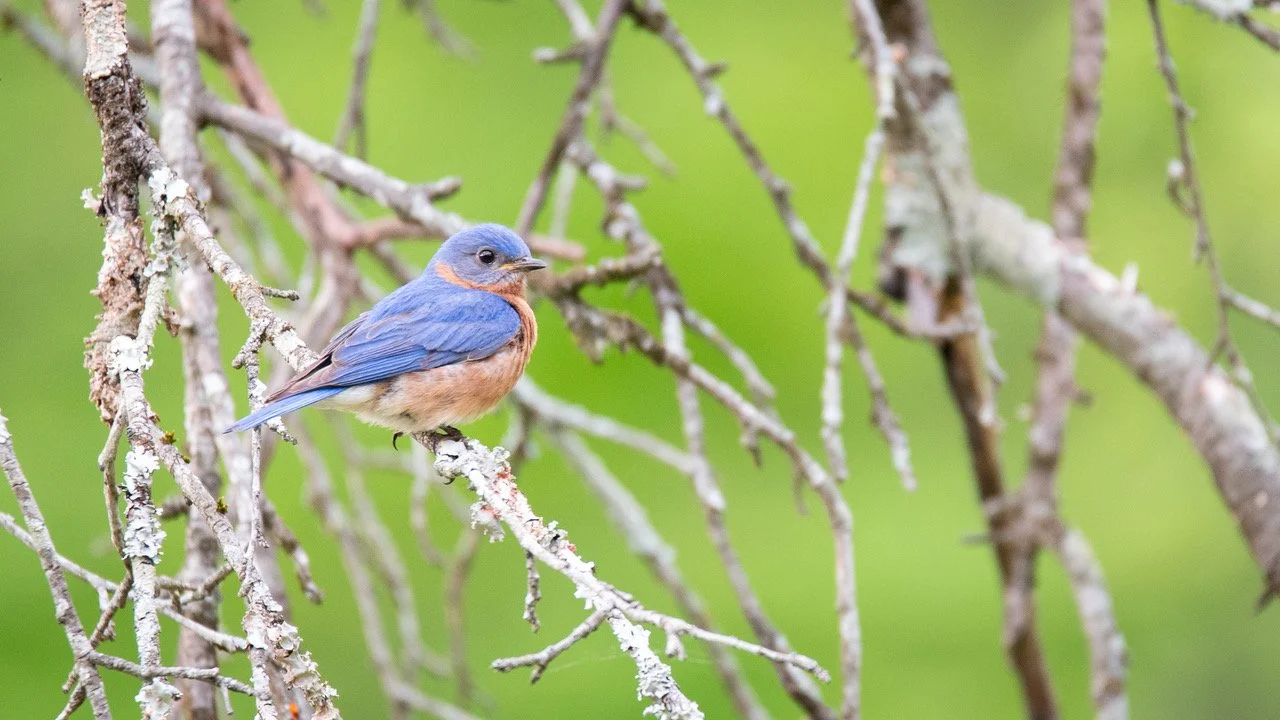Spring Birdwatching
We are in the peak of Spring Migration, and we have been taking full advantage of this at our local parks. This week, I decided to venture to someplace I often pass but rarely visit: Warner Park’s Deep Well Trail entrance. I was not disappointed! Aside from being a beautiful part of the park, with towering old trees and water bubbling out of the rocks, the birdwatching was excellent. I hadn’t yet left the parking area and already I had heard a number of Blue-gray Gnatcatchers chattering away, as well as a Wood Thrush! There were so many calls from everywhere, I decided that it was the perfect time for me to put the Merlin Bird ID app to the test.
For those of you who may not be familiar with Merlin, it is a bird sound identification app produced by the Cornell Lab of Ornithology. It is free to use, and works by using your smartphone’s microphone to listen to the bird in question before making an identification based on sound. We love the app, and it is a great tool to aid in learning bird songs and calls.
In addition to the Northern Cardinals, Tufted Titmice, Red-bellied Woodpeckers, and Carolina Chickadees, Merlin also picked up Red-eyed Vireo, Hooded Warbler, Tennessee Warbler, and a new species for me, the Kentucky Warbler.
After a quick bit of research to know what I was looking for, I turned my attention to finding the Kentucky Warbler. I did not have to look for long; a brief flash of yellow through the undergrowth and two Kentucky warblers came streaking out. A few moments later, the victor returned to his honeysuckle patch and I was able to observe the other. A beautiful bird with an olive back and wings, fading to vibrant yellow on the breast and belly. A black cap, and black markings on the cheek going to the eye round out this striking bird.
Continuing on, I heard a great deal of commotion from the tree tops ahead on the trail. As I walked closer, I soon uncovered the source of the songbirds consternation. Two Barred owls, directly above the trail! Looking through my binoculars, I was able to see that a positively tiny by comparison Blue-gray Gnatcatcher was aggressively mobbing the Barred owl, swooping down and attacking the much larger bird. The owl finally had all it could stand and flew off into a dense cluster of vines and branches.
Barred Owl
Even in a park the size of Percy Warner, it can still be hard to get away from unwanted attention!
Photograph by Eli Haislip
I also paid a visit to one of my favorite locations, Gossett Tract in Cheatham County. This park consists of more open meadow habitat along the banks of the Harpeth River, and as a result, some of the birds I encounter here are different from the birds of the Deep Well portion of Warner Parks. For example, I saw numerous Indigo Buntings, Common Yellowthroats, and Prairie Warblers all singing. If you don’t mind the drive out there, it is well worth the visit!
Arrival of Grosbeaks
Beginning Monday of this week, it felt as though a switch was flipped, and with it the Rose-breasted Grosbeak sightings began to come in thick and fast. We’re not alone either; a brief glance at my email showed me that people throughout the state have been experiencing the sudden influx of R.B.Gs as well.
Male Rose-breasted Grosbeak
Photograph by Eli Haislip
For those of you who are not familiar with these beautiful feeder visitors, let us take a moment to fill you in. Each year these birds can be seen visiting seed feeders from early to mid April through mid May, before moving on to their northern breeding grounds. (A side note, but they are known to breed in the higher elevations of the Smokies in East Tennessee.) We see them again during Fall Migration as they make their way back to Central and South America, though they aren’t as common at feeders during this season. Fortunately for us, they are not difficult to please; safflower, black-oil sunflower, and our blends are all appealing to them. I see them most frequently on my platform feeders. Sightings continue to pour in, so keep your feeders filled and your eyes peeled!
Nashville Bluebird Club
The Tennessee Bluebird Society has a new chapter! For folks who are interested, we are pleased to announce the formation of the Nashville Bluebird Club, Nashville’s branch of the Tennessee Bluebird Society. The club’s mission is to encourage the appreciation of Eastern Bluebirds and other native cavity nesting species by creating and monitoring new and existing nesting box trails and using the data gathered to aid in conservation research. If this sounds like something you or somebody you know would be interested in, please contact Louise Merritt, one of the founding members, at louisemerritt42@yahoo.com for more details!
Male Eastern Bluebird
Photograph by Eli Haislip



